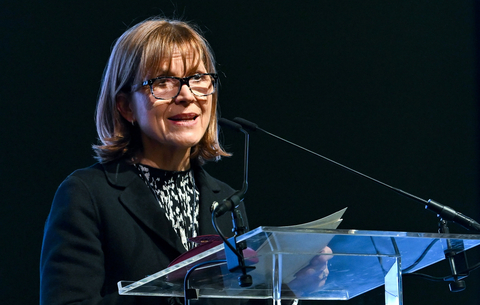Capital reconstruction
In 1982, I wrote an article commemorating the 75th anniversary of Frigyes Podmaniczky's death, in which I bemoaned the absence of an old-style Metropolitan Works Council (FKT). The article was picked up upon by the leaders of the Metropolitan Council. Three years later, Laszlo Siklossy's outstanding work "How Budapest was built" about the FKT's first sixty years, was reissued. The publisher asked me to write an afterword. When I submitted it, the publisher said: "This is no afterword! This is a manifesto!" I explained this was all I could offer. The book appeared several months later, without my afterword.
© Horváth Szabolcs |
The Fidesz leader's sudden desire to deal with Budapest is striking. His government spent four years removing all support from the Socialist-Liberal city council. It is therefore srange to hear him say: "even as a provincial, I believe that Budapest only fulfils the role of economic capital of the nation if it is a magnet and a motor for the Hungarian economy. Without this, the provinces will not prosper either."
In any case, the idea of a Budapest Ministry and of an FKT are entirely contradictory. The former creates the possibility for the government to interfere in the local authority's affairs. We have seen this before - even without a Budapest Ministry - when the National Theatre was relocated, when the mero development programme was suspended, when billions were taken from the city budget. The latter is an organisation that allows for a certain level of co-ordination between the city's elected leadership and the national government. In 1870, when the legendary FKT was created, three years before the the three towns were officially unified, half its members were delegated by the central government and half by the locaul authorities. The 18-member council aimed to promote harmonised development for a developing, growing world city. That Zoltan Vas closed it down after World War II is no coincidence, because it was not compatible with a dictatorship.
After 1990, 23 independent district authorities were established alongside the metropolitan council. Thus the odd- and even-numbered sides of Kiraly utca ended up part of two separate districts. The metropolitan council has practically no influence over the way Budapest is built. Disputes are adjudicated by the Public Administration Office. (Many will remember the Office's work under the Orban government, when it was led by Laszlo Grespik, whose decisions were as idiosyncratic as they were inscrutable).
Perhaps thing to deal with is the future of Budapest's 23 separate district authorities. For this, a two-thirds majority is needed. But of course, nobody dares to touch the law on local authorities. To do so would tread on too many toes. So should a new organisation, appointed perhaps by the prime minister (or a governor, or a regent, maybe even by a king?), run the city? A television reporter asked Orban how a Budapest Ministry could be made to sit alongside the law on local authorities. The reply? "That's the lesser of the two problems." The questioner: "But you would need a two-thirds majority." The answer: "Of course, but we are strong, and we have conviction."
Oh, well that's fine, then!Mihály Ráday is chairman of the Budapest City Protection League.









